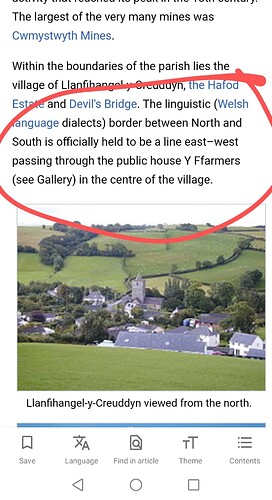Hello, query on Level 1 Challenge 11, sy’n. The way it’s pronounced in the challenge sounds far more like e.g. dyn sy fe’n moyn than dyn sy’n moyn, which seems to me to be what the vocab list has. Or I may have got the wrong end of the stick in some other way. Would really appreciate a bit of clarification, thanks a lot.
What you’re hearing here is “dyn sydd yn moyn”. sy’n is a contraction of sydd yn, so they are the same thing, and both are used commonly.
Thank you so much Siaron, that absolutely explains it!
Diolch yn fawr
Mandy
Hi,
In the simple past of ‘cael’ what is most commonly used version in North Wales, is it ‘Gawson ni’ or ‘Gaethon ni’? I have been unable to work this out for myself 
The only personal experience I can share is that the nice Welsh lady who runs a b&b in Dolgellau once asked me “Gaethoch chi amser da ddoe?” after she greeted me in the breakfast room, so that would match with gaethon ni.
But whether you use one or the other, you’ll be understood perfectly either way. 
Well to be honest, I’m not entirely sure. Cawson ni / mi gawson ni is technically the grammatically correct version, but Caethon ni / mi gaethon ni is very common colloquially. I’m tempted to say I hear the latter more often up here (I tend to use the first one, but that’s probably because of the uni course I did) but I can’t be sure.
As Hendrik said though, both would be understood so whichever gets to your tongue first!
Question: I always got the impression that when saying ‘and’ you use ‘a’ before a consonant and ‘ac’ before a vowel, but that assumption has gone out the window now I’ve reached old course 2-16 (at about 39:38).
The sentence is ‘mae nhw’n ein caru ni ac mae nhw’n nabod rhywun arall sy’n ein caru ni’. That’s an ‘ac’ before a consonant. It occurs that way again in a similar sentence a moment later.
If the a/ac pattern isn’t what I thought, then what is it? Or is ‘mae’ an exception for some reason?
The a/ac pattern is USUALLY as you said, but there are some exceptions. According to Gareth King’s Modern Welsh “a becomes ac before vowels, and also before mae, fel, felly, and wedyn.”
Thank you. I probably won’t remember that, but at least I wasn’t wildly wrong in my understanding!
“Ac mae” is an exception now because originally the phrase was “Ac y mae”, but the y has got left behind these days.
The courses I’ve done in Ruthin and Dolgellau used “gaethon ni, gaethoch chi” and that’s what I use personally. (NB the soft mutation is because of the “mi” that is used before positive verbs in N Wales Welsh, but it often omitted in speech whilst keeping the mutation.)
I associate “cawson ni” more with written Welsh, but it could also be a regional difference. Either will be understood.
Which word have you actually heard being used for hazy, please? Heres the list in the GPC:
[to become hazy, appear watery (of the moon or sun) → boddaf ]
[foggy, hazy, damp → mwrlaidd ]
[misty, hazy, vaporous, steamy, also fig. → tawchlyd mwrlaidd
Niwlog, tarthlyd, llaith
• foggy, hazy, damp . 1791 J. Roberts: C 13, Teg arafaidd / a hin fwrlaidd .Ar lafar ym Meir., B iii. 197.
 I stand corrected!
I stand corrected! 
I am not quite sure of this but I think I have heard people around Porthmadog say “gawsom ni”. The say it quickly so not really sure if it is “gawson” or “gawsom” but sounds like 'gawsom" to me.
Helo pawb (eto),
I’m very curious to know why for this sentence and a couple others that use the “dy hepu di” format that it has to include an “i” before some extensions? This is found on challenge 9 level 1 south, an example of this is:
On i’n trio dy helpu di i ddeall
In my head, this goes like “I was trying to help you to to understand” Is there a specific reason for this?
Any help would be superb, siaronjames you are a star indeed I must say, the continued help on this thread is appreciated by us all 
Well with a compliment like that I suppose I’d better answer! 

The i is used here because there is a sense of purpose… “I was trying to help you (with the purpose of) to understand”. Of course we wouldn’t actually translate the bit in brackets into English because it’s too chunky and awkward, but that is the meaning implied.
Welsh often includes little things like this where English doesn’t (‘that’ is another case you’ll come across where it happens - Welsh puts it in where English only implies it!)
It will take time for your brain to process when that i needs to be there and when not, so try not to overthink it - at this stage, while you’re brain is still absorbing the pattern, people will still understand what you mean if you forget to put it in or put it in where it doesn’t need to be. 
Mae’n debyg fod yn gi.
Mae’n debygol o fod yn gi.
It there a difference? Diolch!

